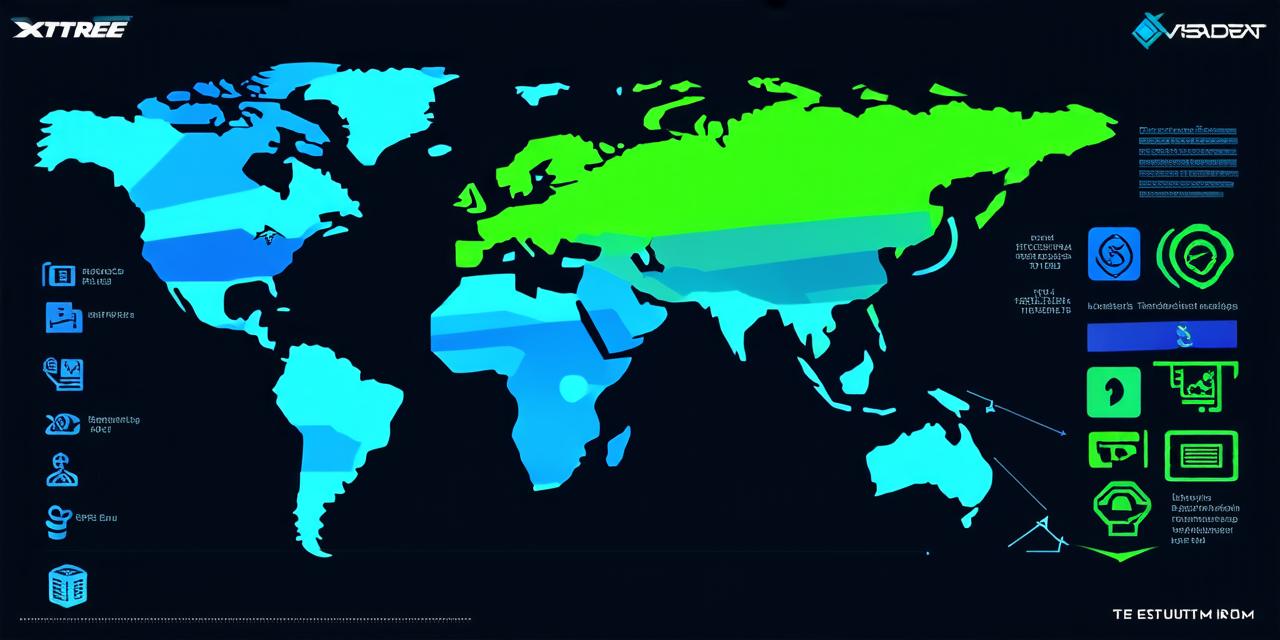Introduction:
Blockchain technology has revolutionized the way we conduct transactions, enabling secure, transparent, and decentralized exchanges. In this article, we will explore the value of blockchain when transacted and examine its benefits in various industries such as payments, trading, and supply chain management. We will also discuss how blockchain can help overcome some of the challenges associated with traditional centralized systems.
The Benefits of Decentralized Payments:
One of the main advantages of blockchain-based payments is their decentralization. Unlike traditional payment methods, which rely on intermediaries such as banks or credit card companies, blockchain payments are processed directly between two parties. This eliminates the need for intermediaries and reduces transaction costs, making payments faster and more efficient.
Another benefit of decentralized payments is their security. Transactions on a blockchain are immutable, meaning they cannot be altered or deleted once recorded. This makes it difficult for hackers to compromise the system, as they would need to gain access to the entire network to manipulate transactions.
Real-life example: Bitcoin, the first and most well-known cryptocurrency, is a prime example of decentralized payments. It was created in 2009 by an unknown individual or group using the pseudonym Satoshi Nakamoto, and it operates on a blockchain that is maintained by a global network of users. Bitcoin transactions are secure and transparent, and they can be conducted without the need for intermediaries such as banks.
The Benefits of Decentralized Trading:
Blockchain technology has also revolutionized the trading industry. Decentralized trading platforms use smart contracts to automate trades, eliminating the need for intermediaries such as brokers or exchanges. This makes trading faster and more efficient, as transactions can be processed instantly without the need for manual intervention.
Decentralized trading also offers greater security and transparency, as all transactions are recorded on a blockchain that is immutable and resistant to tampering. This makes it difficult for fraudsters or hackers to manipulate the system, as they would need to gain access to the entire network to alter transactions.
Real-life example: 0x Protocol is a decentralized trading platform that uses smart contracts to automate trades on the Ethereum blockchain. It has already facilitated over $1 billion in trades and offers greater security and transparency than traditional centralized trading platforms.
The Benefits of Decentralized Supply Chain Management:
Blockchain technology can also be used to improve supply chain management by enabling greater transparency, traceability, and efficiency. By storing transaction data on a blockchain, companies can track the movement of goods from their point of origin to their final destination, providing greater visibility into the supply chain.
This can help reduce waste and improve product quality, as companies can quickly identify and address issues such as counterfeit products or defective materials. It can also help reduce costs by eliminating the need for intermediaries and improving communication between suppliers and buyers.
Real-life example: Walmart has implemented a blockchain-based supply chain management system to improve the traceability of food products. By storing data on a blockchain, Walmart can quickly identify the source of any contamination and recall affected products, reducing the risk of foodborne illnesses.
The Challenges Associated with Centralized Systems:
While centralized systems have their advantages, they also come with significant challenges. One of the main issues is security, as intermediaries such as banks or credit card companies can be targeted by hackers, resulting in data breaches and financial losses.
Another challenge is transparency, as intermediaries often charge high fees for their services and may not provide clear or accurate information to customers. This can lead to mistrust and a lack of confidence in the system.
Real-life example: The 2008 financial crisis was caused in part by the use of centralized banking systems, which allowed banks to engage in risky lending practices and speculation. This led to a collapse of the housing market and a global economic downturn.

Conclusion:
Blockchain technology has the potential to revolutionize various industries by enabling decentralized payments, trading, and supply chain management. Its benefits include greater security, transparency, and efficiency, as well as reduced costs and improved communication between suppliers and buyers. While there are challenges associated with traditional centralized systems, blockchain offers a promising solution that can help overcome these issues. As the adoption of blockchain continues to grow, we can expect to see more innovative uses of this technology in the future.
